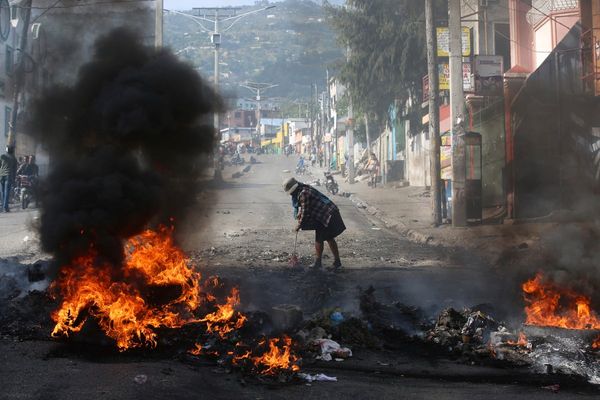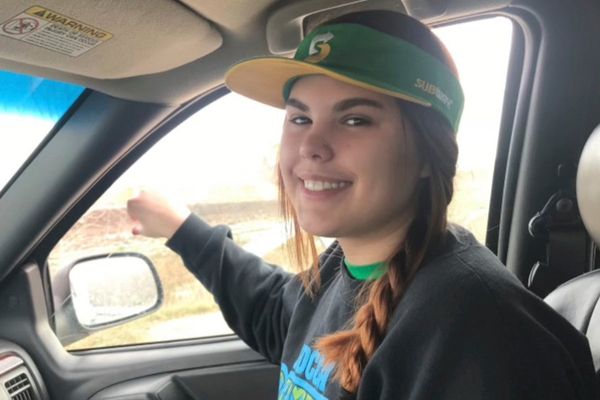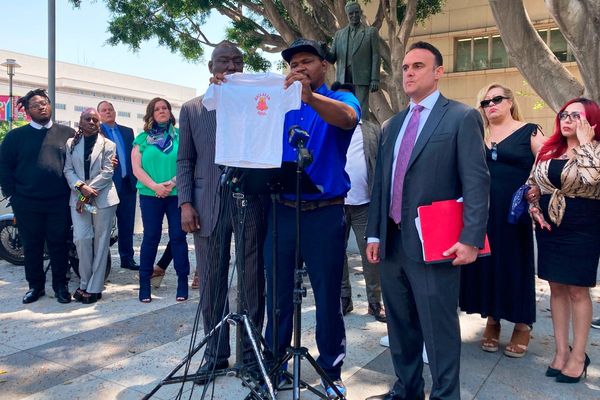
ON a lonely stretch of sand south of Seal Rocks a great secret lies buried.
Improbable as it sounds, it's a huge metal wreck. It's not a ship, but what in World War II was once called a onderzeeboot. It's the remains of a 64-metre long, galvanised steel weapon of war, a former Royal Netherlands Navy (RNN) submarine, which came to grief here in June 1945 while being towed north in heavy weather.
This famous Seal Rocks former Dutch submarine the K-IX, later part of the Australian Navy and imaginatively renamed as HMAS K-9 and nicknamed 'the Canine' by her crew, is the oddest NSW coastal wreck. It's famous really though for being a survivor, and also for being a bit jinxed.
Soon after the vessel (built in 1923) ran aground, it was auctioned by the Commonwealth Disposals Commission for a reported 985 pounds (about $1970), stripped of anything of value and broken up on site.
The K-9 was, however, not totally salvaged, being wedged too heavily in sand to be recovered. Gradually the remains of this underwater boat were submerged by beach sand. Today, most of the craft is normally buried under three metres of shifting sand, while the stern is believed to be seven metres under sand.
But sometimes, the K-9 can make a surprise re-appearance. After wild storms and king tides scoured sand from the wreck remnants, it re-emerged from its sandy tomb in 1974, 1984, and again in 2001.
And who knows? After our recent wild coastal weather, chances are that parts of the odd wreck may re-emerge again. But any curious visitors are likely to be disappointed at what they discover.
They're only likely to spot what seems to be a series of mysterious black boulders, or half-sunk oil drums, in a line at the surf's edge. Over the years, marine archaeologists have identified these as an engine room hatch, or part of an aft torpedo loading hatch. The sub's heavy anchor might also be spied.
I wrote about the K-9/K-IX in my 2020 book Past Port. I believed then the former Dutch submarine was one of only three RNN orphans successfully fleeing the Japanese invasion of the Dutch East Indies (Indonesia) in WWII.
Time has proved me wrong after recently coming across an August 1945 press clipping. This revealed the forgotten story of the 'lost' WWII Dutch submarine fleet.
In the face of an advancing Japanese enemy invasion in 1942, the Dutch boat K-IX was one of the first three subs (the others being the K-VIII and K-XII) which narrowly escaped from Java to Fremantle in Western Australia for safety. The insignia 'K' stood for 'Kolonien' or colonial, as in the Dutch East Indies.
But these three particular ageing submarines soon proved more a liability than a boon.
With a few years, wartime Fremantle was operating as the home base for as many as 177 Allied submarines (mainly American), but also British and 11 Dutch subs, although only six RNN craft were probably there at the same time.
The 1945 press clipping is very fulsome in its praise of the "gallant" Dutch submariners, describing them as men "without a country" filled with a gnawing anxiety for five and a half years for the safety of their families back home in Holland and also in Java.
The submariners worked in great discomfort, with constant worries regarding the condition of their seagoing craft, all of which were built pre-1939, and none of which had parts or munitions capable of being interchanged with the British Royal Navy, or the US Navy.
Those 'K' submarines that could continue long patrols were busy involved in what was referred to as Special Operations. These missions involved gathering intelligence in enemy waters, rescue operations and landing commandos to destroy enemy installations. Some patrols lasted 53 days.

Hundreds of people were landed or taken off from the Netherlands Indies. The aim was to keep alive the flame of hope in Dutch nationals left behind at the time of evacuation.
One Dutch submarine, the 023 brazenly sailed straight into the enemy-held Padang Harbour challenging the self-assurance of the Japanese by blowing up the port's oil storage tanks. Other spectacular raids followed, including sinking Japanese transports and damaging a heavy cruiser in the face of an apparent invincible enemy.
The submarine K-16 was lost after sinking a Japanese destroyer but then four Dutch submarines were lost within two weeks of each other. Earlier, the RNN scuttled three of its submarines to prevent them falling into enemy hands.
After years of struggle to manufacture parts, the Dutch navy converted a merchantman into a depot ship and filled it with stores and spare parts. Unfortunately, soon after she was sunk off the African coast by a German submarine.
Back in Fremantle, the K-IX was lent to the Royal Australian Navy for training purposes and went to Sydney Harbour for much needed engine repairs. About six weeks later, the K-IX now called the K-9, was docked beside the Newcastle-built harbour ferry HMAS Kuttabul at Garden Island Naval Base.
Then at 12.30am on June 1, 1942, a torpedo from a Japanese midget submarine exploded against the seawall. The torpedo, aimed at the USS Chicago, had passed under the K-9 but sank the Kuttabul with the loss of 21 sleeping sailors. The shock wave rolled the submarine back and forth, lifting her diesel engines off their mounts and damaging batteries. HMAS Kuttabul sank, hitting the submarine and crushing part of the forward superstructure.
In mid-July 1942, all repair work stopped as it was decided to decommission the K-9 in August as it was too badly damaged. The same month a sister sub, the K-VIII, was also decommissioned.
The K-9 submarine was finally paid off in 1944, the conning tower apparently was then removed when the hull was converted to carry bulk diesel oil. Then in early June 1945, the old submarine hull was being towed north to Brisbane by the Dutch minesweeper Abraham Crijnssen. There were no crew aboard the sub and no lights showing when the 100metre long steel tow line broke that night and it was cast adrift.
A Catalina flying boat was quickly called in to locate the missing oil lighter, which was later spotted aground on Fiona Beach, about 8 kilometres below Seal Rocks.
An auction soon took place attended by about 40 prospective buyers. Bidders were told there was 126 tons of diesel oil onboard and there were even initial hopes the craft might be pulled off the beach.
Rather strangely, the K-9 wreck was the second submarine the Commonwealth had been asked to sell in 1945 for the Royal Netherlands Navy. The second sub was on a Western Australian beach, according to a news report at the time. A third 'K' sub, the K-XII fared no better, being finally dismantled in Sydney in August 1945.
In January 1977, that part of Fiona Beach where the K-9 submarine came ashore was officially renamed Submarine Beach. Then in July 1999, a team from the NSW Heritage Office relocated the wreck's position with a magnetometer after scanning early aerial beach photographs.
To commemorate the lost Dutch submarine, a plaque was mounted on the shore near the Seal Rocks lighthouse in March 2001.
WHAT DO YOU THINK? We've made it a whole lot easier for you to have your say. Our new comment platform requires only one log-in to access articles and to join the discussion on the Newcastle Herald website. Find out how to register so you can enjoy civil, friendly and engaging discussions. Sign up for a subscription here.







